|
 Dwight Peck's personal website Dwight Peck's personal website
Sirmione and the neighborhood, May 2016
Ten days in the home of the Scaligeri and the heretics
You may not find this terribly rewarding unless you're included here, so this is a good time for casual and random browsers to turn back before they get too caught up in the sweep and majesty of the proceedings and can't let go.
Verona (1): the Castelvecchio
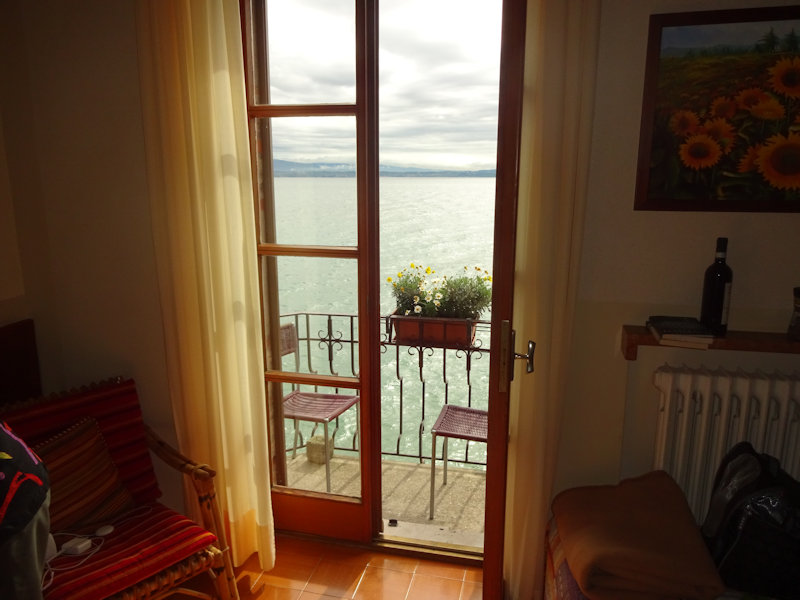
An overcast, but not unpromising, early rising in Sirmione, 12 May 2016

Looking northward up the grim and choppy Lago di Garda; not encouraging
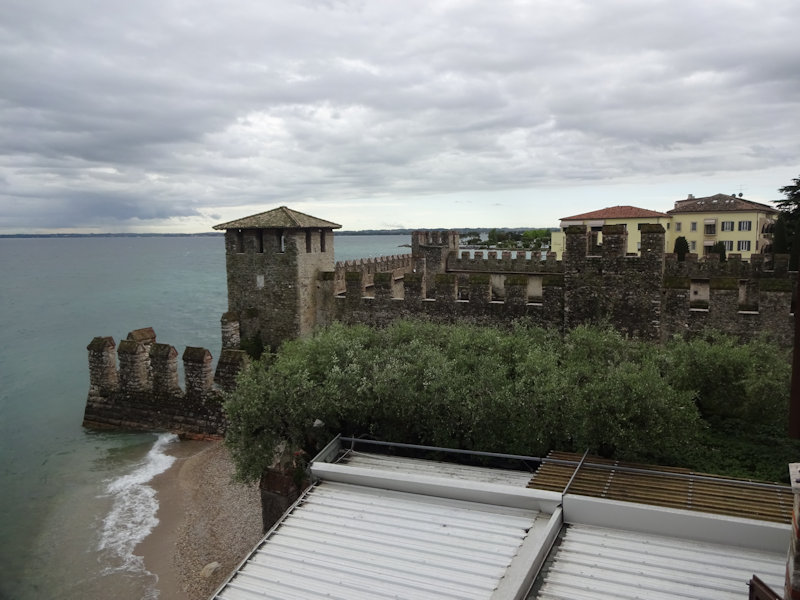
Part of the Castello Scaligero's harbor works, from our balcony
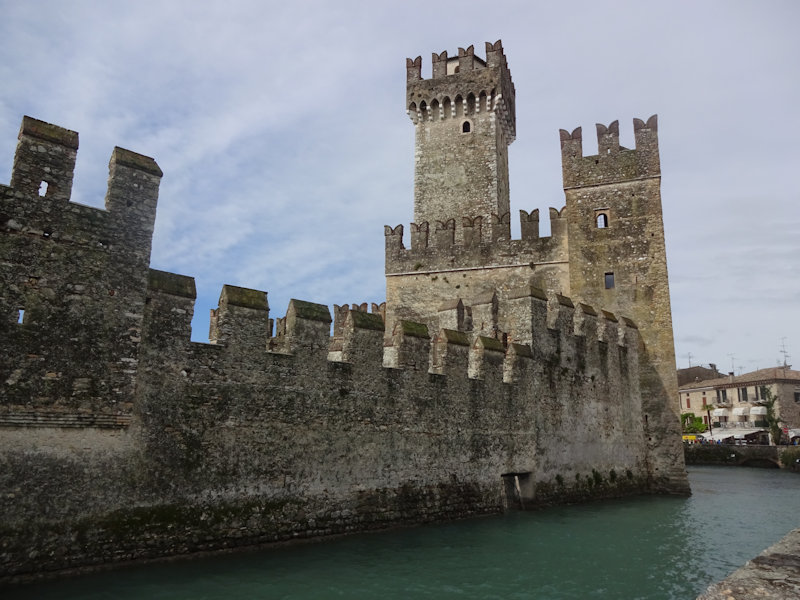
The Scaliger Castle across the moat; an enclosed harbor directly before us, and the keep looming overhead
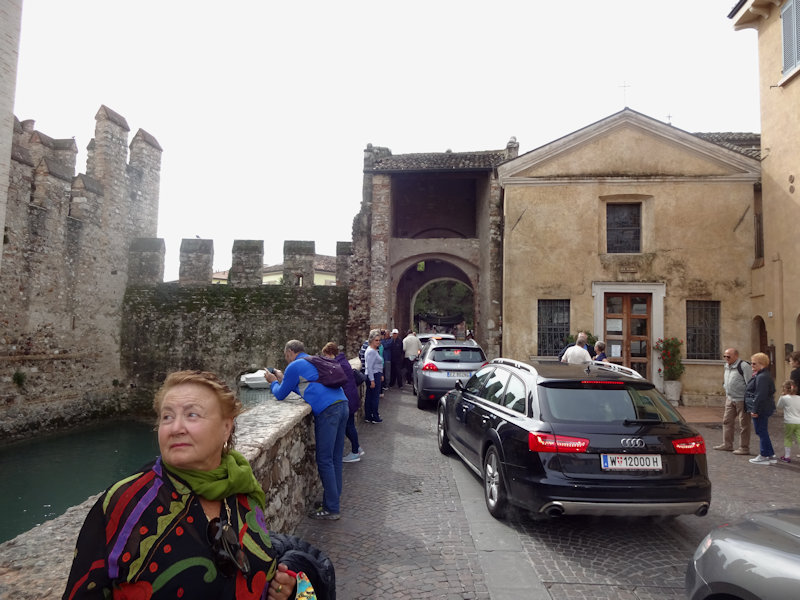
Lining up to leave the Sirmione old town, through the drawbridge. The tiny 12th century church of Sant’Anna della Rocca ('of the fortress') is on the right, originally intended mainly for the use of the castle garrison.

The second drawbridge, directly into the castle, not for public use

The Sirmione peninsula outside the gates: carparks, hotels, tourist amenities
Verona

We've parked conveniently in the Piazza Cittadella underground garage and are proceeding in a stately manner towards the Piazza Bra in the pedestrian old town. Verona, a mid-size city of 260,000 in the Veneto region, with its masses of good stuff to see, was granted UNESCO World Heritage status in 2000.
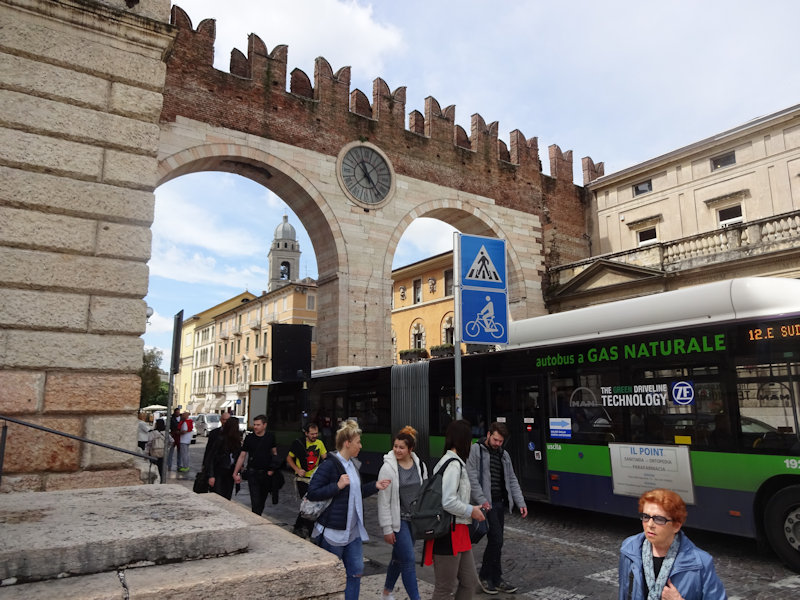
Through an old city gate onto the Piazza Bra. The site of the present city of Verona, located strategically at a ford over the river Adige, at the foot of the route over the Brenner Pass from Innsbruck in Austria, was evidently occupied by Cisalpine Gauls from early times, perhaps taken over from the Etruscans. In any case, the Veronese territory of the Po valley was absorbed by the Romans by about 300 BC, and the city became a Roman municipium in 49 BC, located at the intersection of four important Roman roads.

The Piazza Bra (the famous Arena is off to the right; we'll be back). The city remained commercially and militarily important throughout the Roman Empire, with an ample number of civil-war battles contested here, including a long siege by Constantine the Great in 312. The great general Stilicho defeated Alaric and his Visigoths here in 403 (though following Stilicho's downfall, Alaric came back and sacked Rome in 410). Atilla the Hun was stopped not far from here, in 452, by an embassy led by Pope Leo I.
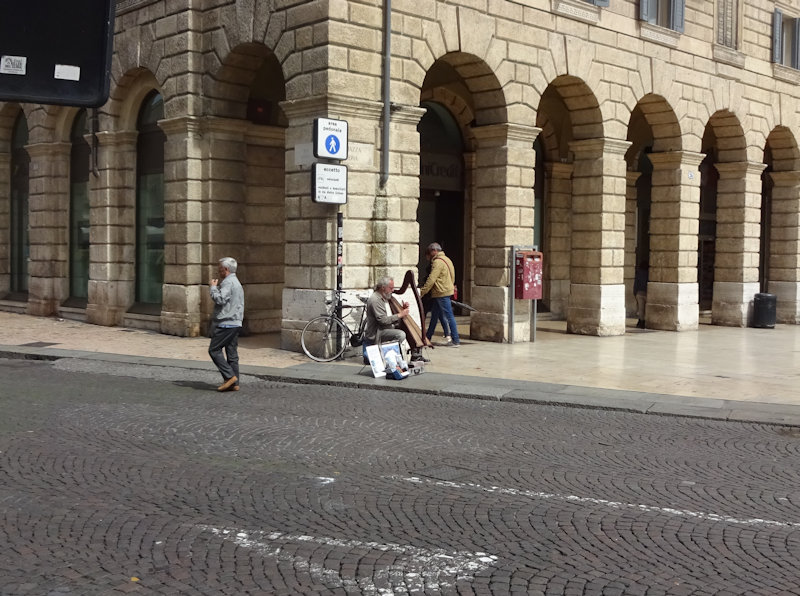
A busker with a harp. Under the Ostrogoths, Theodoric the Great, based in Ravenna, built a palace here, and the city remained almost unconquered during the Gothic Wars of 535-552. Under Lombard rule after 569, Verona was likely the second most important city of the Lombard kingdom, after the capital in Pavia, and Adalgis, son of the last Lombard king Desiderius, tried briefly to hold out here before Charlemagne's army of Franks in 774 (but bolted and left the fugitive widow and sons of Charlemagne's older brother Carloman behind).

Along the Via Roma; the kid walking with the policeman is an honorary cop for the day, with an oversize jacket and cap. Verona was a frequent scene of distressing comings and goings during the anarchic 9th and 10th centuries in northern Italy, the seat, for example, of the off-again on-again King of Italy, Berengar I of Friuli, as well as, sometimes, of his grandson King Berengar II of Ivrea. Prosperity increased amongst the merchant families during the 11th century, and in 1100 Verona, with its 14 civic towers, was established as a free commune. In 1226, however, the town council elected the brutal Ezzolino da Romana as the short-term podestà, and he decided to stay on, with the approval of the Emperor Frederick II, but on his death, Mastino della Scala pulled the same trick and began a Veronese family dynasty that lasted from 1262 to 1387.

The Via Roma, bound for the Castelvecchio or Castello Scaligero. Verona's medieval fortunes hit a first peak under Mastino I's nephew, the famous warlord Cangrande ("Big Dog") I della Scala, who fought non-stop, from about 1308 to 1329, to extend Veronese hegemony over Vicenza, Padua, and the March of Treviso, and as Imperial Vicar of several cities he was an indefatigable help for several emperors in pursuing the Ghibelline cause throughout the region. Cangrande is still remembered chiefly, however, as a patron of writers and artists, for example, Giotto and, most notably, Dante, who was his guest in Verona from 1312 to 1318.

It was under Cangrande's nephew Mastino II, though, that the Della Scalas' fortunes reached their widest extent, as between 1329 and 1339 he gained by conquest and purchase a vast area of subject cities, including Brescia and Parma in Lombardy and even Lucca in Tuscany. His successes made everyone else nervous, however, and a consortium of states headed by Milan, Ferrara, Mantua, and the Papal States ganged up on him and by his death in 1351 he was left with just Verona and Vicenza again.

The Castelvecchio backing onto the Adige river -- it was begun by Mastino II's son, Cangrande II, a vicious and paranoid despot who was apparently called "Can Rabbioso" ('rabid dog') when out of the room, who sensibly felt a strong need for a fortress facing inward toward the city, with a fortified bridge out the back door so he could get north to the Tyrol in case the locals ever came in through the front. He ruled with his German mercenaries from 1351 until his death at 27 in 1359, and the fortress was completed in 1376.

The Castelvecchio courtyard. A number of Scaligers continued both to rule and to assassinate one another, until the unpopular Antonio's Veronese army, commanded by the condottiere Giovanni Ordelaffi of Forli, was badly mauled by a Paduan army led by Sir John Hawkwood and his White Company at the Battle of Castagnaro in March 1387. When Giangaleazzo Visconti showed up with his Milanese army a few months later, Antonio scampered and a century of Scaligeri rule came to an end. When a last member of the family tried successfully to return but died soon after, in 1405 Verona came under Venetian control for the next century.

After a few decades around the early 16th century, during which Verona was ruled by the Empire and then France, it reverted to Venetian control and was developed by the Venetians, with fortifications and civic amenities, into the main presence in their inland territories. After the chaos of the Napoleonic adventures, Verona was deeded to the Austrian Empire by the Congress of Vienna in 1815 as part of its "Kingdom of Lombardy–Venetia", within which it remained uneasily until joining the unified Kingdom of Italy in 1866.
In 1943, after the Germans had broken Mussolini out of jail and set up the fascist "Italian Social Republic" in Salò on Lake Garda, six members of the Grand Fascist Council who had voted to remove Mussolini from power and open peace negotiations with the Allies, including the Foreign Minister, Mussolini's son-in-law Ciani, were given a show trial and executed here at the Castelvecchio, in January 1944.

The Scaligero fortress, with seven towers, an enormous keep, and a moat formerly fed by the river, is presently the home of the Museo Civico di Castelvecchio, an excellent collection of mostly medieval paintings and artifacts in a celebrated setting designed in the early '60s by the architect Carlo Scarpa.
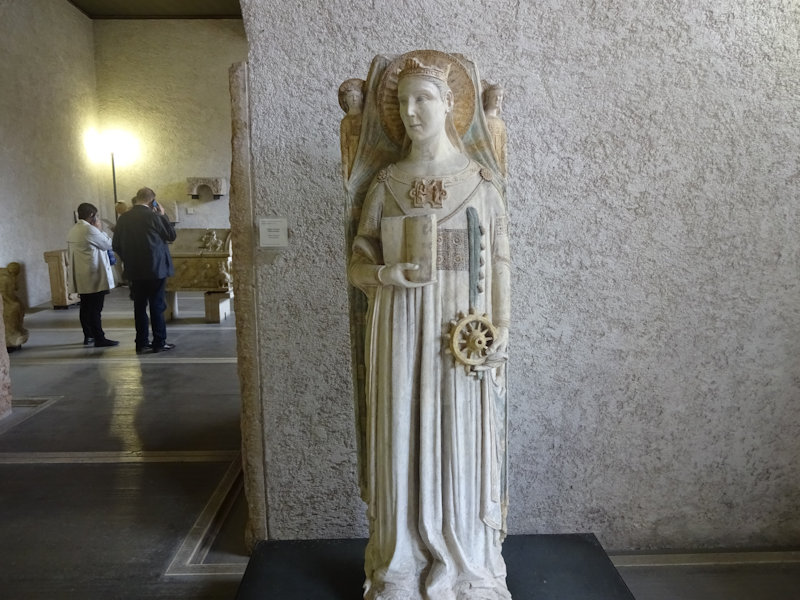
Saint Catherine of Alexandria, one of quite a few statues by the Maestro di Sant'Anastasia, first half of the 14th century

Another

And another, of the Virgin Mary

And another

The coat of arms of the Della Scala family, the scaling ladder
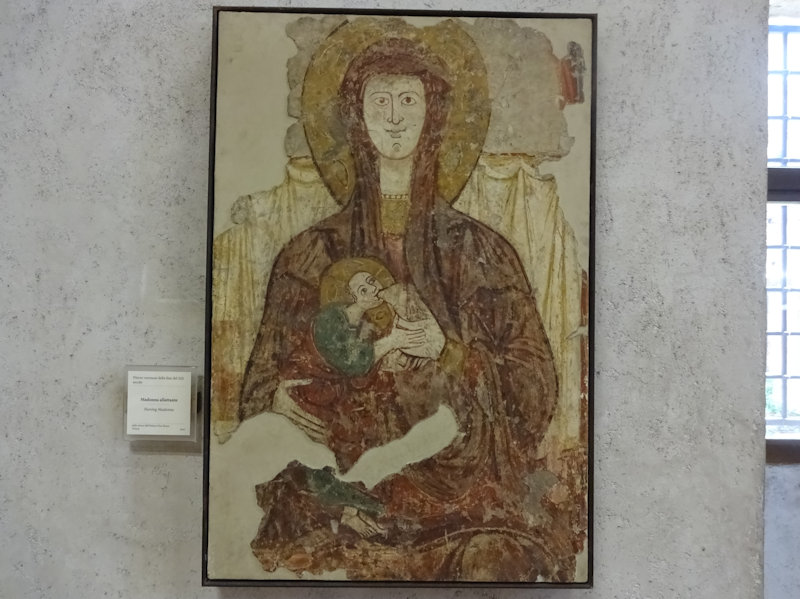
Another improbable Nursing Madonna (Veronese painter of the late 13th century)

This is said to be the sword of Cangrande I della Scala himself.

"Thirty Bible stories", 14th century

Saint Jerome in the desert, by Jacopo Bellini -- 17 paintings, including works by Rubens, Tintoretto and Mantegna, stolen in a big heist in November 2015, have just been found safe and sound in Ukraine, wrapped up in plastic bags, and all of the museum staff are over the moon.

"Found!"

Another Nursing Madonna with anatomical miscalculations (Michele Giambino, early/mid 15th century)
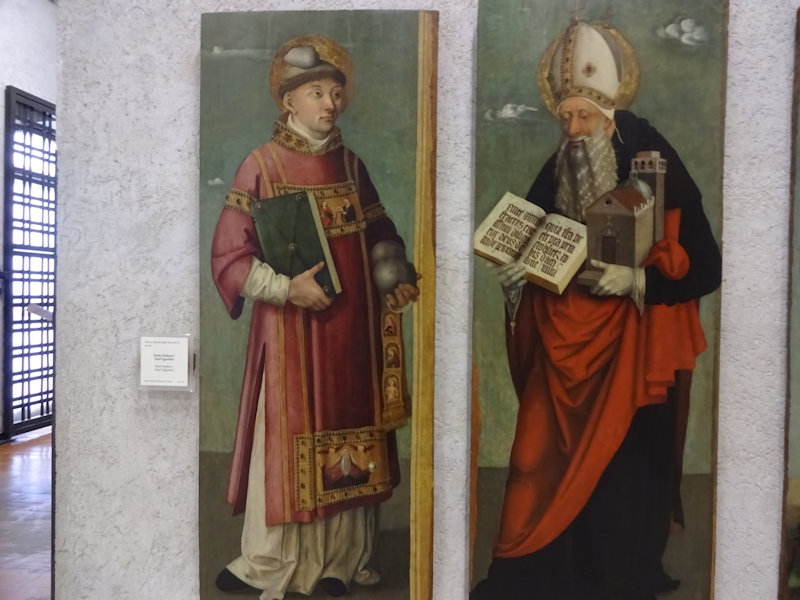
Saint Stephen, the "first martyr", with the rocks on his head, and St Augustine, with his book and church (late 15th century)

The Madonna and Baby, with Catherine of Alexandria on the right and, on the left, Saint Mary the Consoler, sister of the 8th century Bishop of Verona, Hanno -- she ended a local famine by going to Istria to ransom the bodies of some Veronese martyrs and working miracles whilst there.

Today's winner in the Ugly Jesus sweepstakes. The "Aquila Polyptych", Giovanni Badile, 15th century.
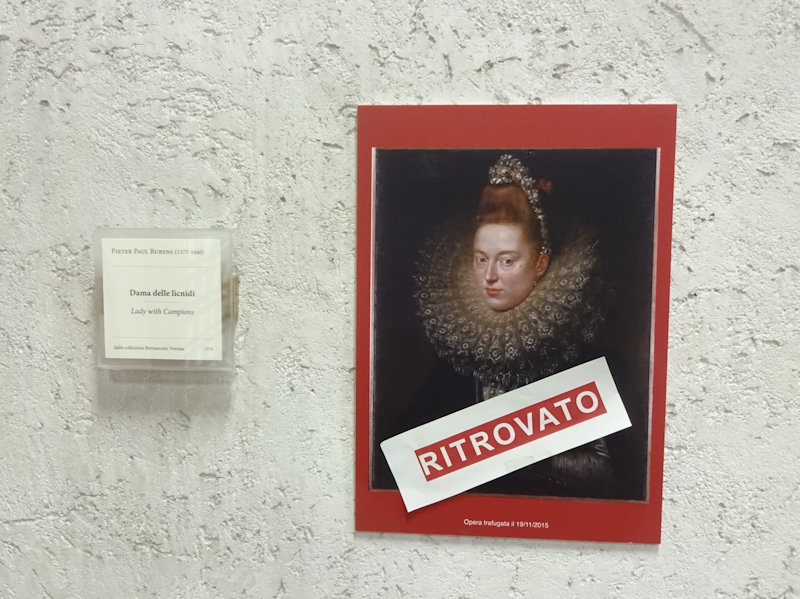
Rubens, "Lady with campions" -- Found!

Four Tintorettos, found.

Kristin and a photographer from the Corriere di Verona, capturing "a foreigner's reaction to the happy news"

A beautiful layout
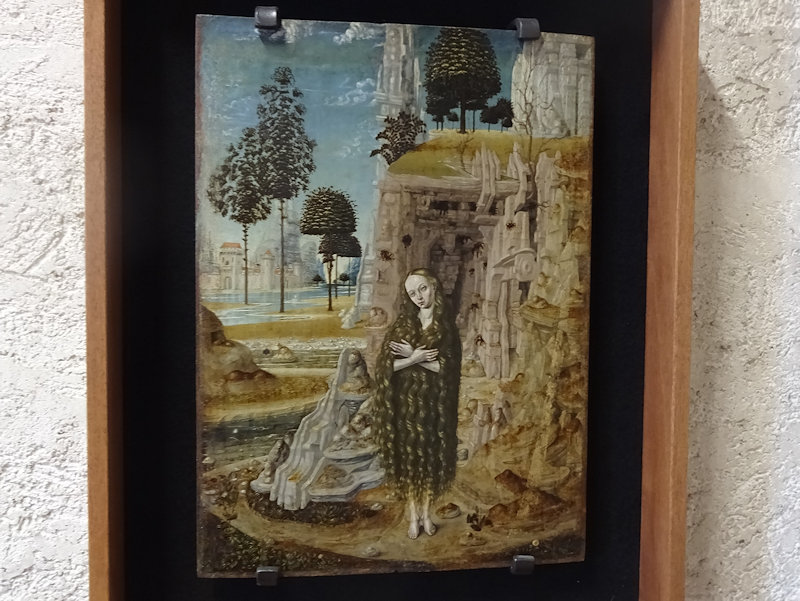
We collect Mary Magdalenes, but that's actually Saint Mary of Egypt (Santa Maria Egiziaca), patron saint of penitents, strugglers for chastity, demons, and skin diseases. This 4th or 5th century young lady was an insatiable nymphomaniac who traveled from Alexandria to Jerusalem to find even more sexual partners, where luckily she glimpsed a relic of the True Cross and went off happily to the desert to live as a penitent hermit. (Painter from Ferrara, 15th century)


Saint Rocco, the buboes man (Domenico Morone, early 16th century)

-- We can talk this over. Just put down the rock. (Madonna/Child with St Jerome; Giovanni Mansueti, early 16th century)
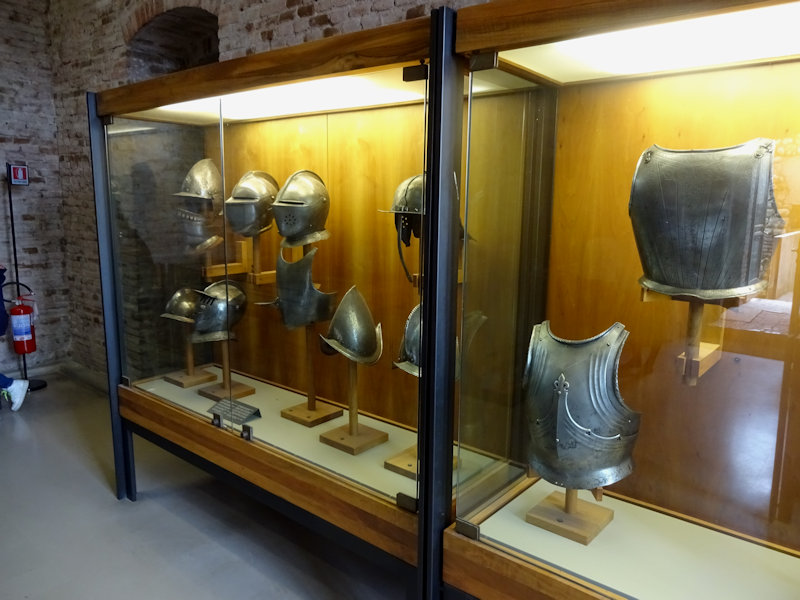
Military stuff
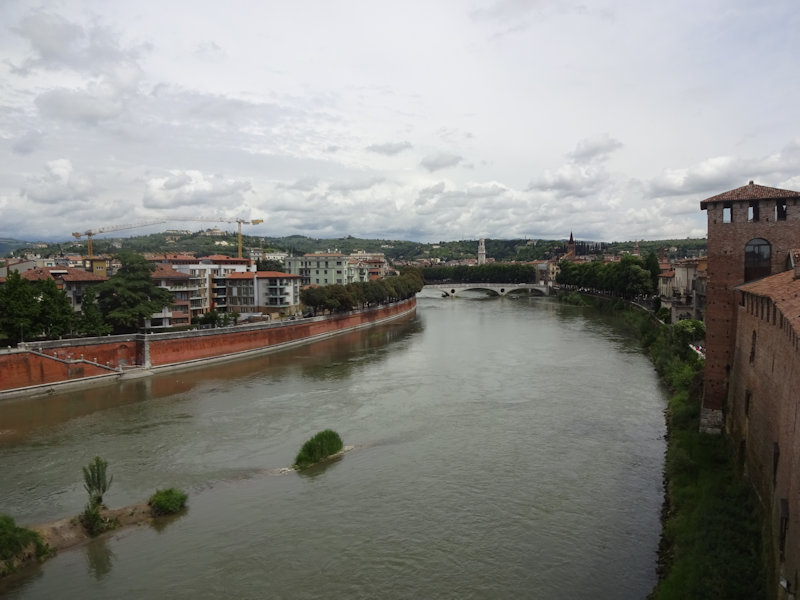
The river Adige, out the back of the castle

The bridge of the Castelvecchio, the Della Scalas' back door to Austria in the event of serious civic discontent. This, like all of the bridges in Verona, was blown up by the retreating Germans in April 1945, but was lovingly recreated. Note the Ghibelline "swallow-tail" merlons in the crenellations, as on the castle itself.

Looking upstream on the mighty Adige. The church of San Zeno is in the background.

The bridge again, with a divebombing bird

Within the castle's outer walls, but outside its inner walls, this is an avenue onto the bridge that could have easily been closed off, if necessary, back in the day.

The castle courtyard from the battlements
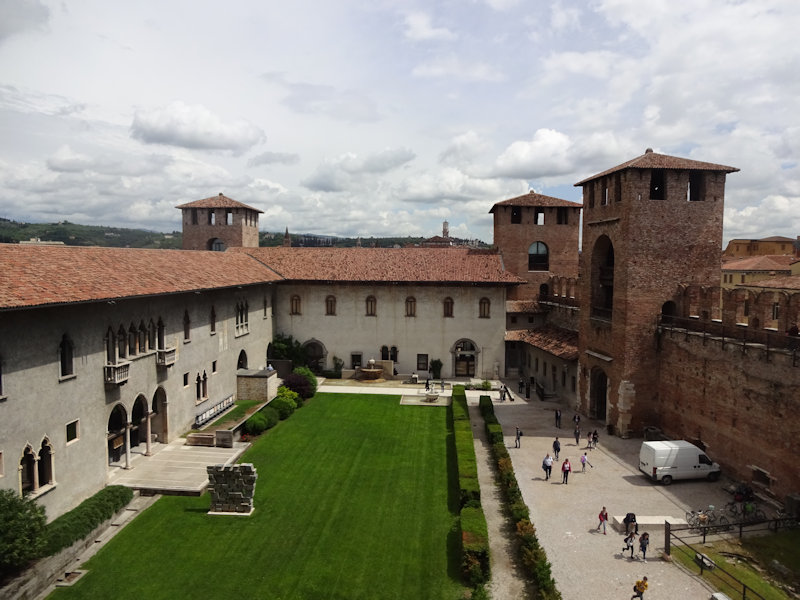
Another view
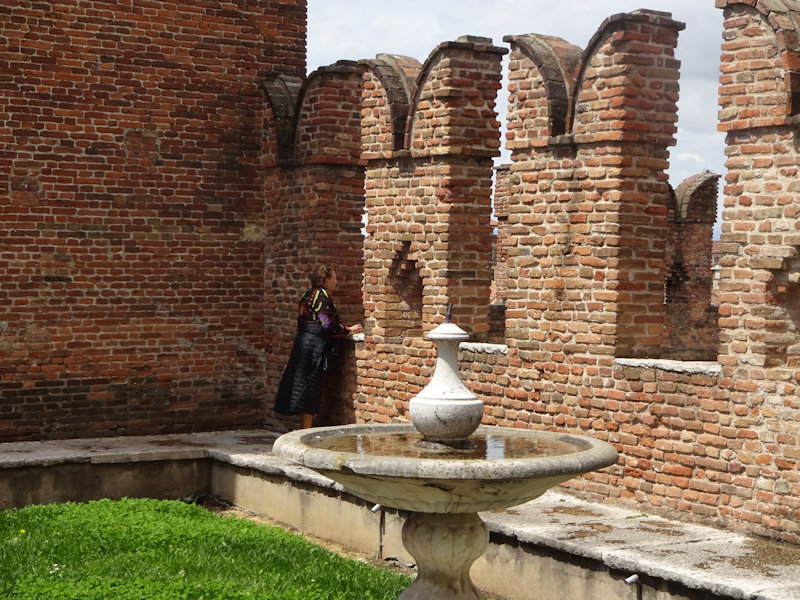
Kristin and the Ghibelline merlons

Mastino II della Scala, with his "mastiff" helmet on

The Via Roma from the castle, with a statue of Cavour
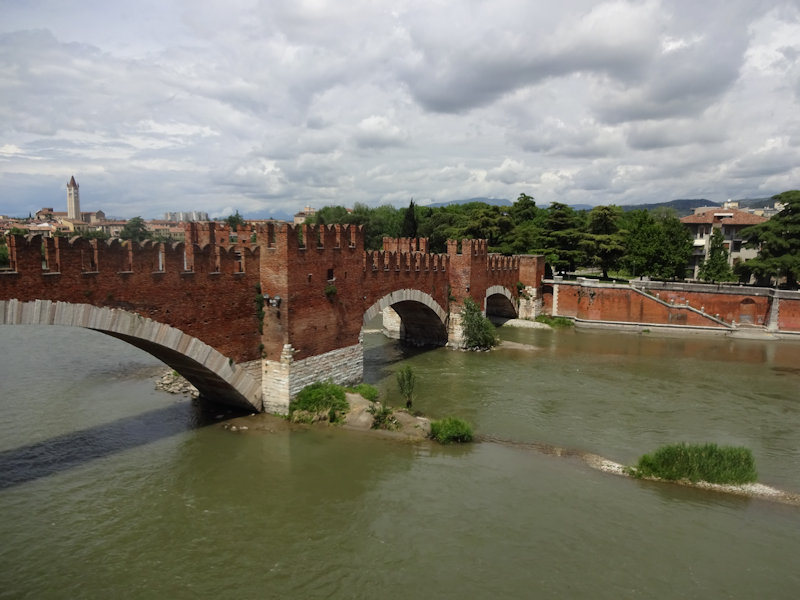
The Ponte Scaligero, or Ponte di Castelvecchio

Cangrande I della Scala, with his dog-helmet hanging off the back
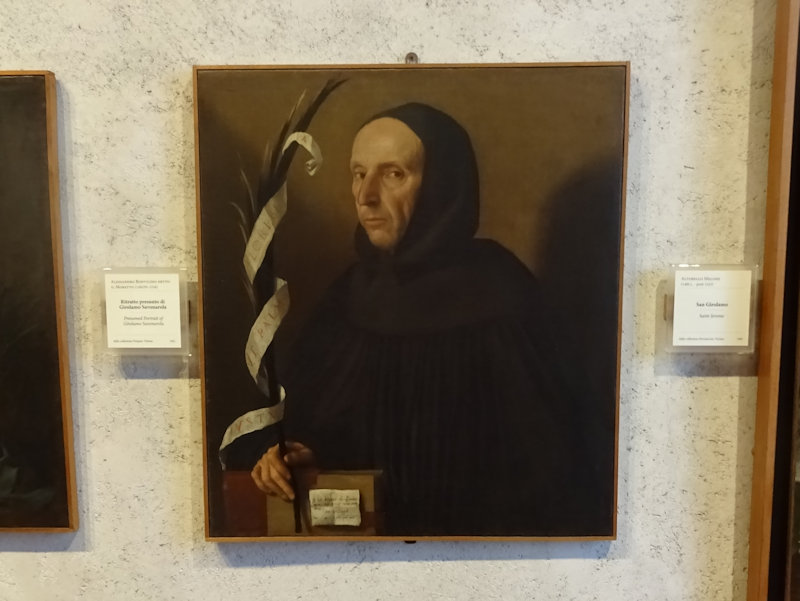
Everybody's favorite Dominican nutter, Savonarola (by Il Moretto da Brescia)

"La Gran Contessa", Matilda of Tuscany (or "Matilda of Canossa"), one of the great power brokers, peace makers, and warriors of 11th century Italy (by Paolo Farinati of Verona, 16th century)

Madonna and Child in a forbidding mood
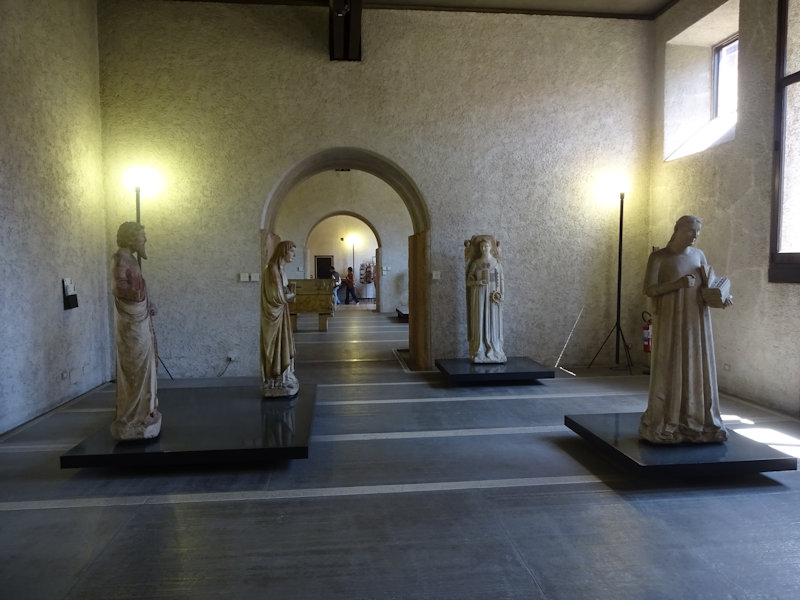
Maestro di Sant'Anastasia statues in a Carlo Scarpa curatorial setting (we'll be visiting the Church of Saint Anastasia shortly, perhaps we'll see some more there)

Leaving the Scaligero Castelvecchio

Cavour's statue out in the street
Verona continues here
      
     
  

 Feedback
and suggestions are welcome if positive, resented if negative, Feedback
and suggestions are welcome if positive, resented if negative,  .
All rights reserved, all wrongs avenged. Posted 16 July 2016. .
All rights reserved, all wrongs avenged. Posted 16 July 2016.
|
 Dwight Peck's personal website
Dwight Peck's personal website


























































